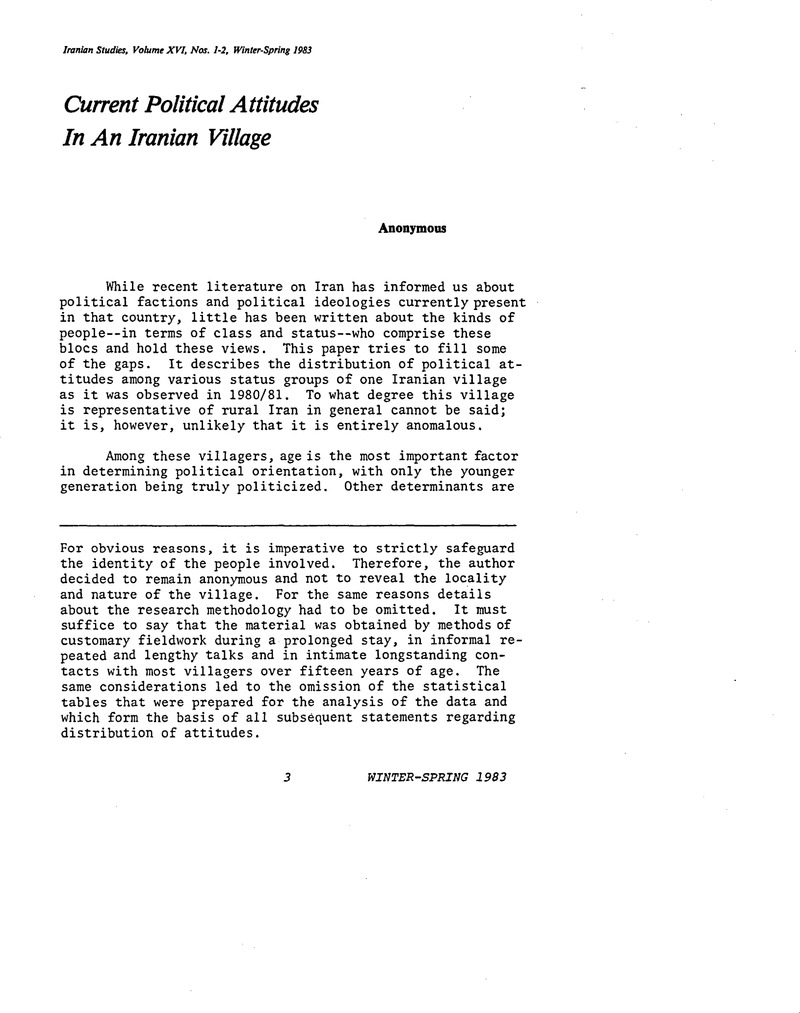Article contents
Current Political Attitudes In An Iranian Village
Published online by Cambridge University Press: 01 January 2022
Abstract

- Type
- Articles
- Information
- Copyright
- Copyright © Association For Iranian Studies, Inc 1983
Footnotes
For obvious reasons, it is imperative to strictly safeguard the identity of the people involved. Therefore, the author decided to remain anonymous and not to reveal the locality and nature of the village. For the same reasons details about the research methodology had to be omitted. It must suffice to say that the material was obtained by methods of customary fieldwork during a prolonged stay, in informal repeated and lengthy talks and in intimate longstanding contacts with most villagers over fifteen years of age. The same considerations led to the omission of the statistical tables that were prepared for the analysis of the data and which form the basis of all subsequent statements regarding distribution of attitudes.
References
Notes
1. Ehlers, Eckart, “Iran--Wirtschafts-und sozialgeographische Aspekte einer ‘islamischen’ Revolution,” Geographische Rundschau 32 (January 1980), pp. 2–15Google Scholar, and Keddie, Nikkie R., Boots of Revolution: An Interpretive History of Modern Iran (New Haven and London: Yale University Press, 1981).Google Scholar
2. Parvin, Manoucher and Zamani, Amir N., “Political Economy of Growth and Destruction: A Statistical Interpretation of the Iranian Case,” Iranian Studies XII (Winter-Spring, 1979), pp. 43–78.CrossRefGoogle Scholar
3. Fischer, Michael M. J., “Becoming Mollah: Reflections on Iranian Clerics in a Revolutionary Age,” Iranian Studies XIII (1980), pp. 83–117.CrossRefGoogle Scholar
- 1
- Cited by




